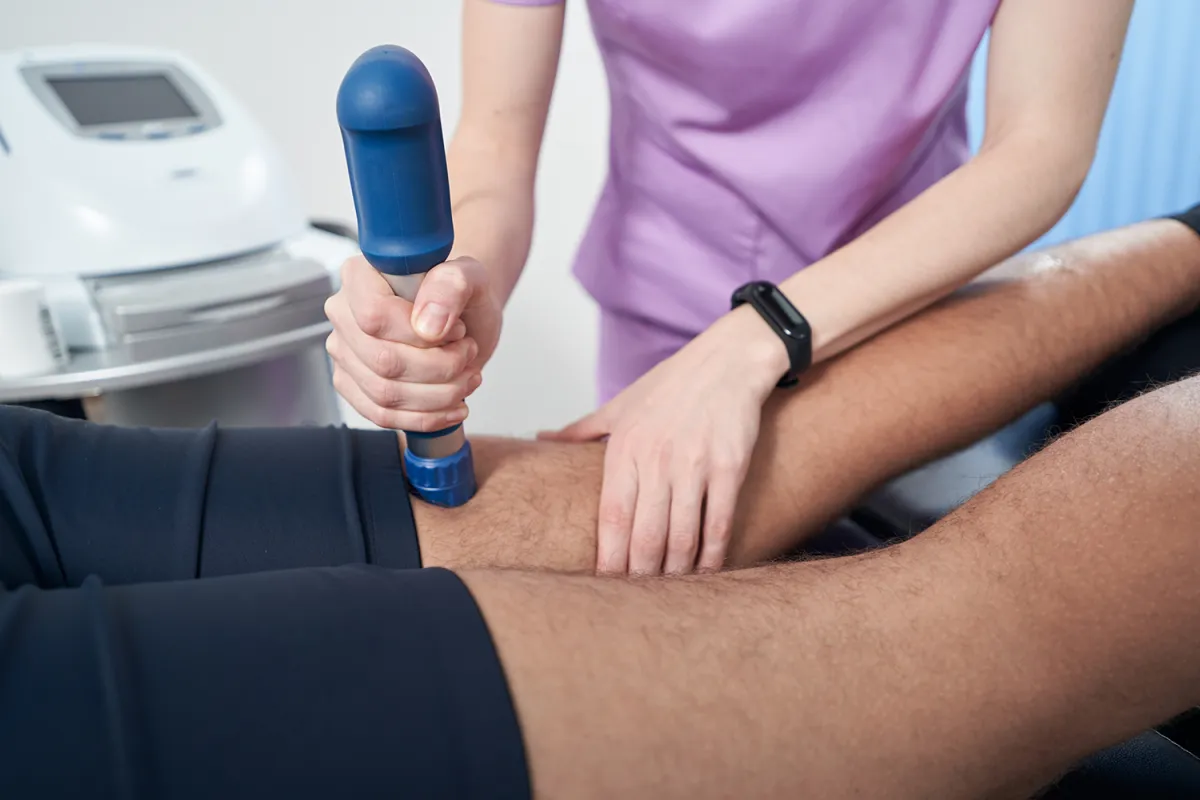Blog
Dr. Bruce R. Lowry - Chiropractic Physician since 2000

Uncovering the Benefits of Shockwave Therapy: A Non-Invasive Solution for Chronic Pain and Injury Recovery
Title: Uncovering the Benefits of Shockwave Therapy: A Non-Invasive Solution for Chronic Pain and Injury Recovery
Introduction:
Living with chronic pain or dealing with a prolonged injury can be exhausting, both physically and mentally. For individuals looking to avoid surgery or long-term medication use, shockwave therapy offers a non-invasive, effective solution that promotes natural healing. Originally developed to treat kidney stones, shockwave therapy has evolved into a powerful tool for treating musculoskeletal pain and soft tissue injuries. In this post, we’ll explore what makes shockwave therapy unique and how it can help those struggling with chronic pain, injuries, and mobility issues.
1. How Does Shockwave Therapy Work?
Shockwave therapy, also known as extracorporeal shockwave therapy (ESWT), uses high-energy acoustic waves to stimulate healing and relieve pain in damaged tissues. These acoustic waves penetrate deep into muscles, tendons, and ligaments, breaking down scar tissue, reducing inflammation, and promoting blood flow. The therapy encourages the body’s natural healing processes, often resulting in faster recovery times and less pain.
Unlike treatments that mask symptoms, shockwave therapy addresses the root cause of pain, stimulating cellular repair and regeneration. This non-invasive approach is ideal for patients seeking long-term relief without the need for drugs or surgery.
2. Targeting Chronic Pain and Inflammation
Chronic pain often results from conditions that lead to inflammation, such as tendinitis, bursitis, or plantar fasciitis. For example, repetitive strain on the feet can lead to plantar fasciitis, a painful condition that’s notoriously difficult to treat. Shockwave therapy offers an effective solution by reducing inflammation and breaking down fibrous scar tissue that contributes to chronic discomfort. Many patients experience significant pain reduction after a few sessions, allowing them to return to daily activities with greater ease.
3. Accelerated Healing for Soft Tissue Injuries
Shockwave therapy excels in treating soft tissue injuries by speeding up the body’s healing response. The acoustic waves stimulate the production of collagen, a key protein for repairing injured tendons, ligaments, and muscles. By enhancing blood flow to the injured area, shockwave therapy delivers more oxygen and nutrients to the tissue, helping it heal more efficiently. Athletes, individuals with overuse injuries, and people recovering from trauma often find shockwave therapy instrumental in achieving a full and rapid recovery.
4. A Non-Surgical Solution for Joint Pain
For many people, joint pain is a persistent issue that can impact mobility, activity levels, and quality of life. Traditional treatments often include injections, medications, or surgery, which can come with risks and recovery time. Shockwave therapy provides a non-surgical option that addresses the source of joint pain. By reducing inflammation and improving the function of surrounding muscles and tendons, shockwave therapy helps patients regain mobility and comfort in the knees, shoulders, elbows, and hips.
5. Treating Calcifications in Soft Tissues
Calcification of soft tissues, or the buildup of calcium deposits in tendons and muscles, can lead to significant pain and stiffness. Shockwave therapy is especially effective at breaking down these calcium deposits, which can otherwise cause chronic pain and limit movement. Patients with conditions like calcific tendonitis often find that shockwave therapy offers noticeable relief, as it breaks down calcifications and improves flexibility in the affected area.
6. An Ideal Complement to Physical Therapy and Chiropractic Care
Shockwave therapy can be easily integrated into a holistic treatment plan that includes physical therapy or chiropractic care. While chiropractic adjustments focus on aligning the spine and joints, shockwave therapy targets soft tissues, helping to loosen muscles, reduce tension, and further relieve pressure on nerves. Physical therapists also use shockwave therapy to support patients recovering from surgery or sports injuries, helping them restore strength and mobility faster.
When combined, these therapies provide a comprehensive approach that enhances healing from all angles, addressing both alignment and tissue health.
7. Benefits Without Side Effects
One of the biggest advantages of shockwave therapy is its lack of side effects. Patients can experience relief and healing without the potential downsides of medication or invasive procedures. Treatment sessions are typically brief, lasting only 10-20 minutes, with no need for anesthesia or extended recovery time. Patients may experience mild soreness after a session, similar to the feeling after a workout, but this generally subsides within a day or two.
8. Conditions Commonly Treated with Shockwave Therapy
Shockwave therapy is versatile and effective for a wide range of conditions, including:
Plantar fasciitis
Tennis elbow
Rotator cuff injuries
Achilles tendonitis
Patellar tendonitis (jumper’s knee)
Shin splints
Hip pain
Calcific tendonitis
Myofascial pain syndrome
By focusing on cellular repair and inflammation reduction, shockwave therapy offers lasting relief for individuals struggling with these chronic and painful conditions.
Conclusion:
Shockwave therapy is a valuable tool in treating chronic pain and soft tissue injuries, offering relief for those looking for a non-invasive, drug-free approach to healing. By stimulating the body’s natural repair mechanisms, shockwave therapy reduces pain, enhances mobility, and accelerates recovery. Whether you’re dealing with a sports injury, joint pain, or chronic inflammation, shockwave therapy can be a game-changer for your health. Contact Dr. Bruce R. Lowry at The Chiro to learn more about how shockwave therapy can support your path to recovery and help you regain a pain-free, active lifestyle.
Hear From Our Patients
Don't take our word for it; take a look at what our life-long patients have to say!






